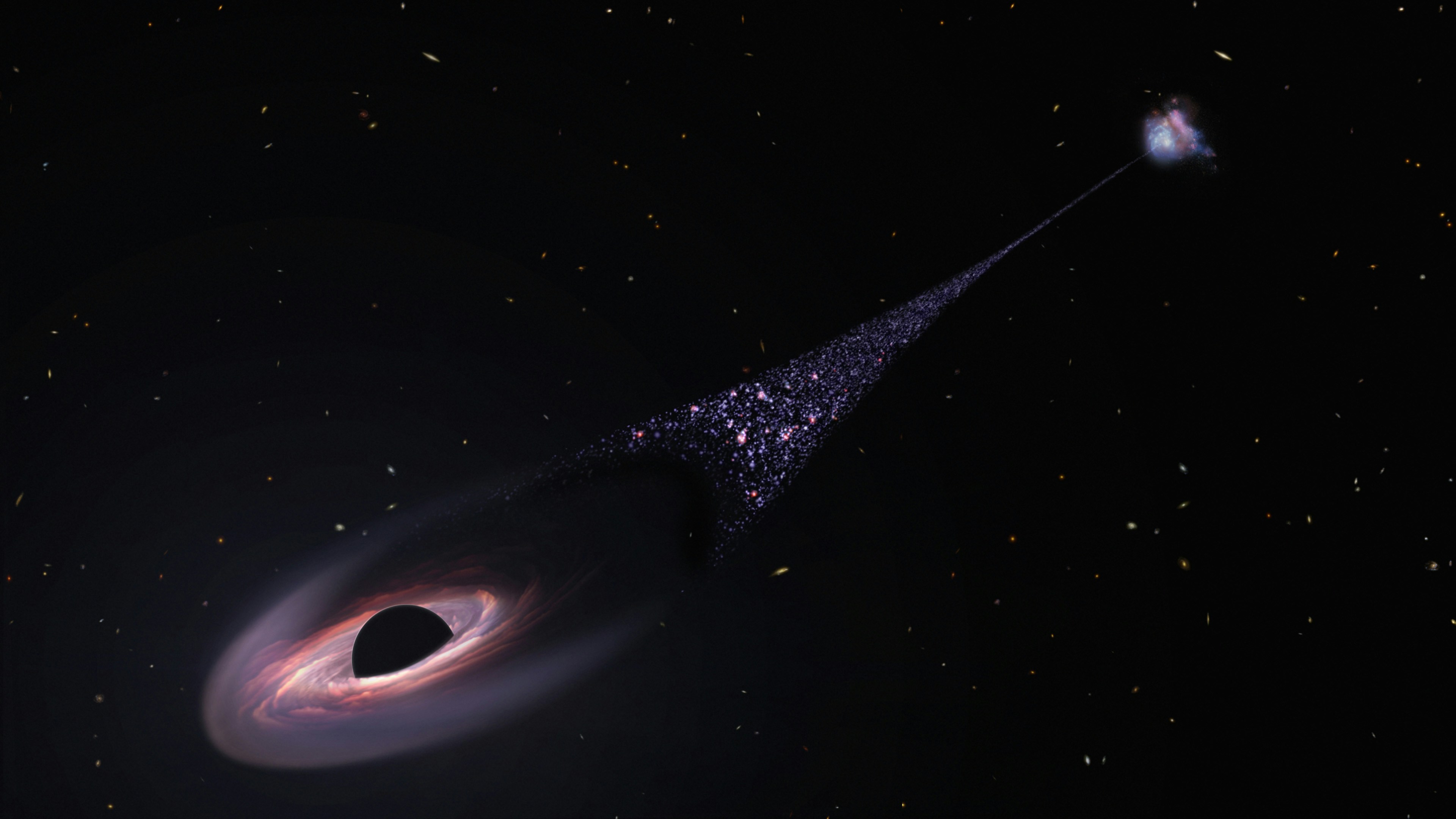Media release
From:
Springer Nature
Astronomy: Longest known black hole jets detected
A giant jet pair emanating from a black hole has been detected and is described in Nature. The jets, which have a combined length of approximately 7 megaparsecs or about 23 million light years, are the largest jets from a black hole reported to date.
Supermassive black holes can emit powerful jets of radiation and particles that, when sustained for millions of years, can impact the flow of matter through the intergalactic medium by shooting electrons, atomic nuclei, and magnetic fields through space. Previous observations of black hole jets suggested that their size could not exceed 5 megaparsecs, where 1 parsec is approximately 3.26 light years.
Martijn Oei and colleagues analysed radio images from the International LOFAR Telescope to study black hole energy flows on the megaparsec scale. Through this process, the researchers identified large jets, which they named Porphyrion. An initial examination of the telescope data revealed the jets’ combined length to be at least 6.43 megaparsecs. Oei and colleagues note that the jets likely extend further into space: since images are flat, Porphyrion's length component along the line of sight remains tricky to measure. The researchers corrected for this effect using mathematical formulae and arrived at a total length for Porphyrion of 6.8–7.3 megaparsecs.
The authors conclude that Porphyrion’s existence is evidence that jets from supermassive black holes can avoid being destroyed by fluid instabilities over vast cosmological distances. However, they note that understanding the mechanics that kept Porphyrion stable requires more research.
Attachments
Note: Not all attachments are visible to the general public.
Research URLs will go live after the embargo ends.

Research
Springer Nature, Web page
The URL will go live after the embargo lifts.
Journal/
conference:
Nature
Organisation/s:
California Institute of Technology, USA
Funder:
M.S.S.L.O. and R.J.v.W. acknowledge support from the VIDI research
programme with project number 639.042.729, which is financed by the Dutch Research
Council (NWO). M.S.S.L.O. also acknowledges support from the CAS–NWO programme for
radio astronomy with project number 629.001.024, which is financed by the NWO. In addition,
M.S.S.L.O., R.T. and R.J.v.W. acknowledge support from the ERC Starting Grant ClusterWeb
804208. M.J.H. acknowledges support from the UK STFC (ST/V000624/1). R.T. is grateful for
support from the UKRI Future Leaders Fellowship (grant MR/T042842/1). A.B. acknowledges
financial support from the European Union - Next Generation EU. F.d.G. acknowledges support
from the ERC Consolidator Grant ULU 101086378. The work of D.S. was carried out at the Jet
Propulsion Laboratory, California Institute of Technology, under a contract with the National
Aeronautics and Space Administration (NASA). We thank F. Sweijen for making available
legacystamps67. We thank R. Caniato and J.H. Croston for illuminating discussions. LOFAR data
products were provided by the LOFAR Surveys Key Science project (LSKSP68) and were derived
from observations with the International LOFAR Telescope (ILT). LOFAR30 is the LOw-Frequency
ARray designed and constructed by ASTRON. It has observing, data-processing and
data-storage facilities in several countries, which are owned by various parties (each with their
own funding sources) and which are collectively operated by the ILT foundation under a joint scientific policy. The efforts of the LSKSP have benefited from funding from the European
Research Council, NOVA, NWO, CNRS-INSU, the SURF Co-operative, the UK Science and
Technology Funding Council and the Jülich Supercomputing Centre. We thank the staff of the
GMRT, who made these observations possible. The GMRT is run by the National Centre for
Radio Astrophysics of the Tata Institute of Fundamental Research. Some of the data presented
herein were obtained at the W. M. Keck Observatory, which is operated as a scientific
partnership among the California Institute of Technology, the University of California and
NASA. The Observatory was made possible by the generous financial support of the W. M.
Keck Foundation.



 International
International



